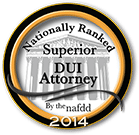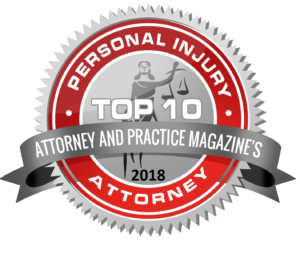Pedestrian accidents can happen suddenly and often cause serious injuries that change lives. In Virginia, weather conditions can play a large role in how these accidents happen and how claims for those accidents are handled. When drivers or pedestrians face heavy rain, icy roads, foggy skies, or high winds, visibility can drop and road surfaces become slippery, making it harder to react and stay safe. Weather does not excuse a driver from responsibility, but it can add extra layers of complexity to a pedestrian accident claim. Understanding these factors can help those who have been injured know what to expect and how to pursue fair compensation in Virginia. At, NovaLegalGroup, P.C., we are here to guide you through the legal process and help you navigate the complexities of your case.

Rain and Wet Roads in Virginia Pedestrian Accidents
Virginia experiences rainy weather throughout the year, and rain is one of the most common weather conditions affecting road safety. When rain pours down, it can create slippery surfaces on sidewalks, crosswalks, and roads. This means that a driver’s braking distance becomes longer, making it harder to stop quickly. Water buildup on the road can also cause hydroplaning, which happens when a car’s tires lose traction with the road surface. Drivers may find it challenging to control their vehicles during heavy rain, and this loss of control can lead to more accidents involving pedestrians.
The legal aspects of a pedestrian accident claim involving wet roads can be complicated. Insurance companies might argue that the rain created unavoidable conditions that prevented a driver from stopping in time. However, drivers are still required to drive carefully in wet conditions and maintain control of their vehicles. In Virginia, proving that a driver failed to take proper caution in rainy weather can be essential to a successful claim. Evidence like witness statements, traffic cameras, or police reports might show if a driver was speeding or ignoring the slippery road conditions. Knowing how rain affects claims can help victims understand the importance of collecting strong evidence for their cases.
Snow, Ice, and Their Impact on Pedestrian Safety
In winter, Virginia roads often face snow and ice, which create some of the most dangerous driving conditions for vehicles and pedestrians alike. Snow can reduce visibility, making it difficult for drivers to see pedestrians crossing streets or walking on sidewalks. Ice, on the other hand, makes road surfaces extremely slippery, causing drivers to lose control more easily, especially if they are driving too fast or fail to use caution in areas prone to ice formation.
The icy or snowy road conditions also impact the responsibilities of drivers in Virginia. Drivers are expected to adjust their driving according to weather conditions, and if they fail to do so, they can be held responsible for accidents they cause. If a pedestrian accident occurs on an icy road, drivers cannot simply blame the ice. Instead, investigators will look into how the driver handled the car and whether they drove cautiously under those conditions. In pedestrian accident claims, proving that the driver acted carelessly despite the presence of snow or ice can be crucial. Victims need to work with legal professionals who can help gather the right evidence to show that the driver did not take proper safety measures in the winter weather.
The Effects of Fog on Pedestrian Accident Claims in Virginia
Fog is another common weather condition in Virginia, especially in the early morning hours. Thick fog can severely limit a driver’s visibility, making it difficult to see pedestrians, stop signs, or even traffic lights. Drivers must slow down and use low-beam headlights to navigate safely through foggy conditions. When drivers ignore these safety practices and drive as if the roads are clear, they put pedestrians at great risk of being hit.
In the event of a pedestrian accident caused by foggy conditions, establishing fault becomes an important aspect of the claim. Virginia law requires drivers to operate their vehicles safely and adjust to road conditions. Failure to slow down or to use proper headlights in the fog may show negligence, and this is important for a pedestrian accident claim. However, insurance companies might argue that the fog created a difficult situation, suggesting that the driver could not have avoided the accident. This defense does not mean the driver is free from liability; it simply means that a strong claim will need to show that the driver acted in a way that increased the risk to the pedestrian. Collecting police reports, accident scene photos, and even witness testimonies can help support claims when fog is a factor.
Choosing a Personal Injury Attorney Personal Injury Case TimelineRelated Videos
High Winds and Their Role in Pedestrian Accidents
High winds are often overlooked as a danger, but they can play a surprising role in pedestrian accidents. Strong winds can make it hard for drivers to control their cars, particularly if they are driving large vehicles or those with high profiles, like trucks and SUVs. Winds can push a car off course, forcing it into pedestrian pathways, sidewalks, or crosswalks. For pedestrians, walking in high winds can also be dangerous, as loose objects or tree branches may suddenly fall or fly across walkways, creating unexpected hazards.
When a pedestrian accident occurs due to high winds, the legal aspects of the claim can be complex. Insurance companies might argue that the wind was an unavoidable force of nature, making it difficult to hold the driver fully responsible. However, Virginia law still expects drivers to act responsibly and make adjustments to their driving to avoid accidents, even during strong winds. To establish a strong claim, victims may need to show that the driver failed to slow down, overcorrected, or was otherwise reckless despite the windy conditions. Such details can make a difference in whether or not the victim receives compensation for injuries and damages.
Sun Glare and Its Impact on Driver Visibility
Though not as obvious as rain or snow, sun glare is another weather condition that can lead to pedestrian accidents in Virginia. During certain times of day, especially during sunrise and sunset, the sun can shine directly into a driver’s eyes, causing temporary blindness. This bright glare can make it hard for drivers to see pedestrians crossing the street or stepping off the curb. Drivers are expected to use sun visors, slow down, or even wear sunglasses to improve their ability to see when sun glare is strong. Ignoring these simple precautions can lead to serious accidents.
If a pedestrian accident occurs due to sun glare, a claim may examine whether the driver acted responsibly. Virginia law does not excuse a driver simply because they were affected by sun glare. Instead, drivers are expected to take appropriate steps to manage their visibility in all conditions. In a claim, proving that the driver failed to take action against sun glare, like not using a visor or not slowing down, could be key. Victims may need legal help to gather evidence that supports this, as insurance companies may try to argue that the sun glare made the accident unavoidable. A well-prepared claim can demonstrate that the driver’s actions, not just the glare, contributed to the accident.
The Importance of Evidence in Weather-Related Pedestrian Accident Claims
In Virginia pedestrian accident claims, evidence plays a crucial role, especially when weather conditions are involved. Insurance companies may attempt to minimize the driver’s responsibility by focusing on the weather, so it is vital to build a strong case. Evidence such as witness statements, accident scene photos, weather reports, and police records can help paint a clear picture of how the weather affected the accident. For example, photos of the accident scene may show puddles, snow, or visibility issues, which can demonstrate how the driver might have reacted or failed to react.
Collecting evidence also involves understanding what type of weather was present at the time of the accident. Was there rain that made the roads slippery, fog that limited visibility, or snow and ice that created a hazardous surface? Each weather type requires different precautions from drivers, and showing that the driver ignored these precautions can strengthen a pedestrian’s claim. Working with legal professionals can help victims gather, analyze, and present this evidence to ensure a fair process for compensation.
If you or a loved one has been injured in a pedestrian accident in Virginia, dealing with the legal system and insurance companies on your own can be overwhelming, especially when weather conditions add complexity to your case. At NovaLegalGroup, P.C., we understand the challenges that weather-related factors can introduce to a claim, and we are dedicated to helping you seek the compensation you deserve. Our team is here to listen, guide you through your legal options, and work toward a fair outcome on your behalf. Contact us today to schedule a consultation and take the first step toward protecting your rights.









